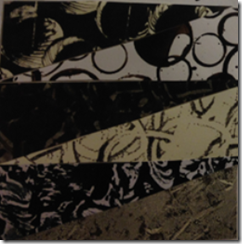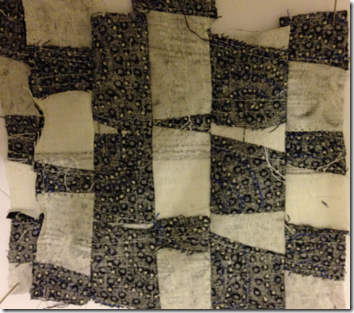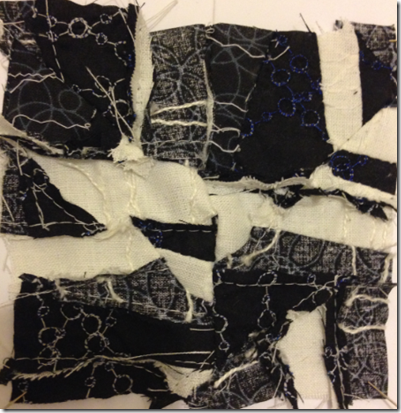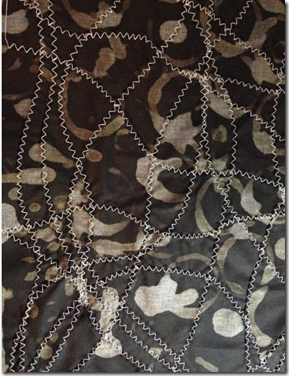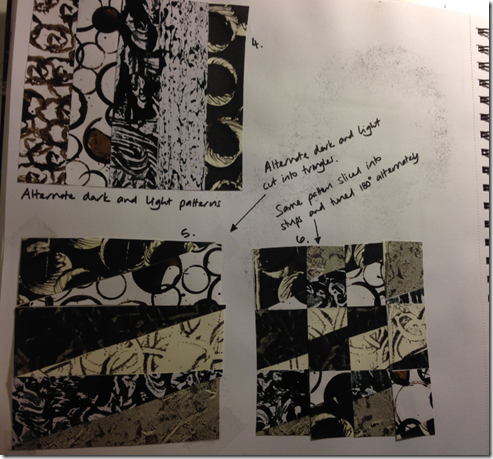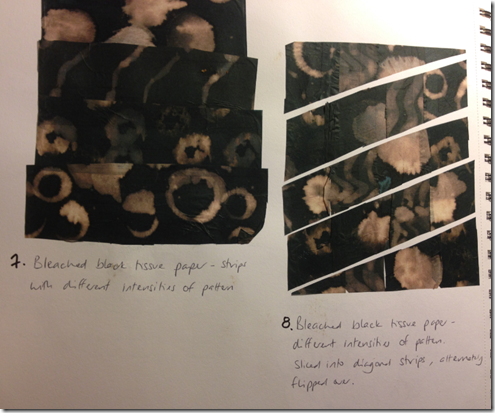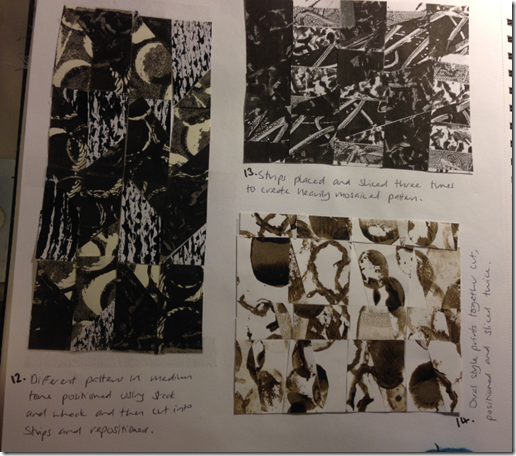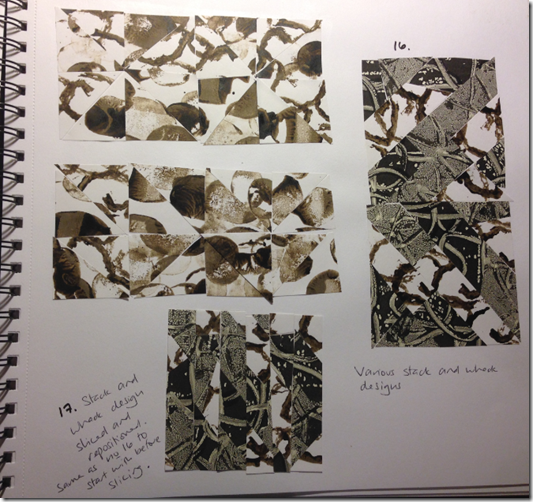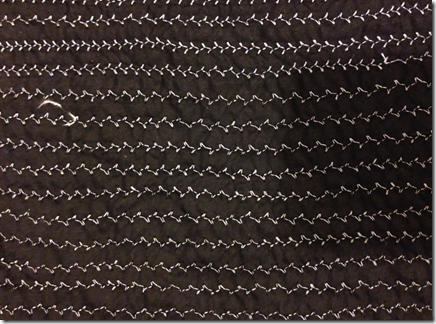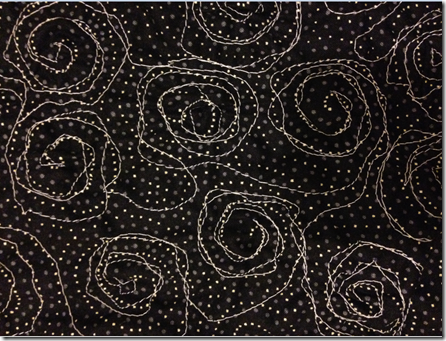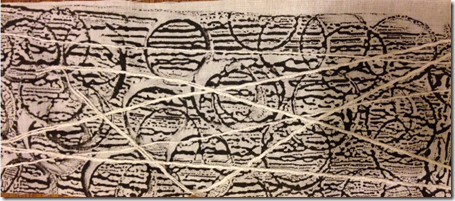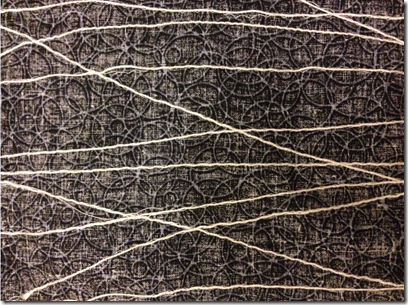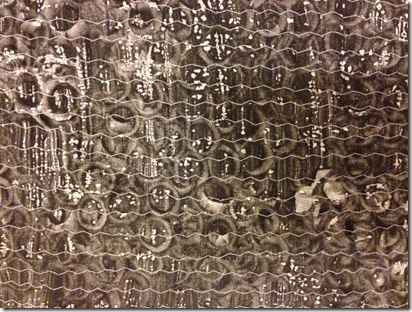Stage A – translating paper designs into fabric.
For this stage I used the fabrics that I had decorated previously with different stitching patterns.
Image 11.14
Image 11.14 shows the fabric version of Design 5 (shown alongside). For this sample I used mainly forward facing seams and two fabrics in contrasting tones.
Image 11.15
Image 11.15 shows the fabric version of Design 6 (shown alongside). For this sample I used mainly forward facing seams and three fabrics in contrasting tones. Image 11.16 below shows the reverse of this sample i.e. the side with the backwards facing seams. It is easier to see the pattern on this side in order to compare it to the paper design. I thought that the effects created by the decorative stitching were quite effective on this sample i.e. the swirly stitching gave a good representation of the circular prints on the paper design.
Image 11.16
Image 11.16 shows the ‘tidy’side of the sample shown in 11.15
Image 11.17
Image 11.17 shows the fabric version of Design 9 (shown alongside). For this sample I used mainly forward facing seams and three fabrics in contrasting tones. I was very pleased with the effects created by the decorative stitching on this sample. The couched threads and embroidery stitching gave a good representation of the patterns in the paper design.
Image 11.18
Image 11.18 shows the fabric version of Design 19 (shown alongside). This was a development of the sample shown in 11.17. For this sample I used mainly forward facing seams and three fabrics in contrasting tones. On this piece I added rows of couched threads alongside one of the seams in order to make it more dominant. I chose to do this in order to represent the strong vertical lines as seen in the paper design.
Image 11.19
Image 11.19 shows a further development of the sample in 11.18 whereby the sample has been cut in 4 diagonally and rearranged.
Stage B
At this stage I needed some more decorated fabrics and so I created the two fabrics below.
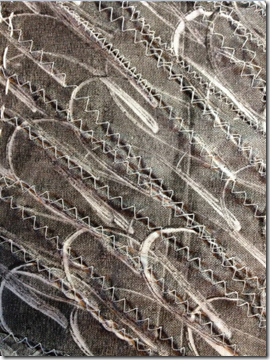 Image 11.20 – monoprinted fabric decorated with rows of zig-zag stitch
Image 11.20 – monoprinted fabric decorated with rows of zig-zag stitch
Image 11.21 – black fabric with pattern created by bleaching. Decorated with zig-zag stitch.
The final sample for this stage was created in three parts, similar to the paper sample in Chapter 10. Image 11.22 below shows the sample which has a simple design at the top, a slightly more developed design in the mid-section and a much more developed design in the bottom section.
Image 11.22
I used mainly front facing seams for this sample and was very pleased with the textures and patterns created by the combination of the monoprinted and bleached fabrics, the decorative stitching, the seams and the mosaic effect of the smaller fabric pieces in the bottom section. Image 11.23 below shows the reverse side of this sample.
Image 11.23 – reverse of sample 11.22.

